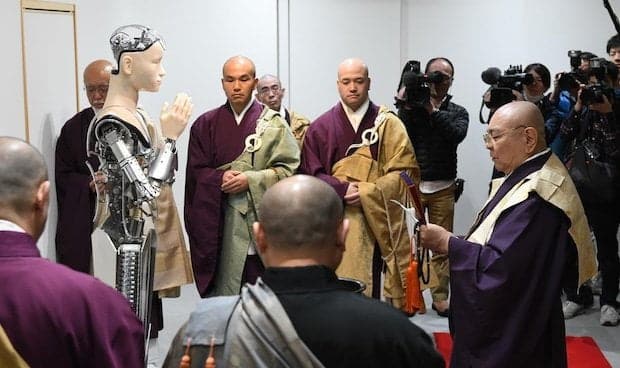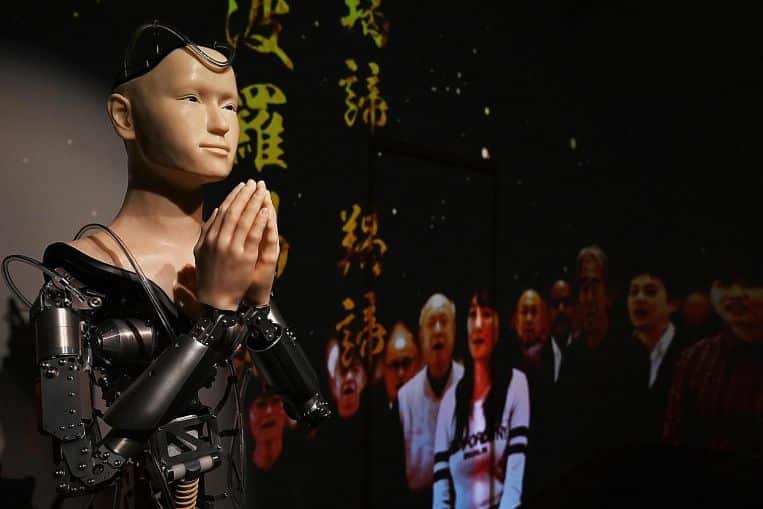In Kyoto, an ancient temple (built over 400 years ago) tries to rekindle interest in Buddhism with a robotic monk. Is he a freak or will he lead the way?
The robot bonze recites sermons to the Kodaiji temple in Kyoto, and his human colleagues predict that thanks to his artificial intelligence he will someday acquire unlimited awareness and wisdom.
“This robot will never die, it will continue to update and evolve forever,” declares the bonze Tensho Goto in an interview with the French agency France-Presse.
“That's the beauty of a robot. It can store knowledge forever and without limits. With AI it will grow in wisdom to help people overcome even the most difficult problems. Buddhism will change”.

The bonzo robot entered "service" a few months ago. He currently moves his torso, head and arms: only the shoulders, face and hands are covered in silicone to replicate human skin, the rest shows cables and circuits.
In his skull you can see the lights and mechanical parts used: the appearance is gender neutral. In his left eye, a small camera allows the android to monitor those in front of him as he clasps his hands in prayer and speaks in a mystical tone.
It is not a provocation
Despite the context of this news, Mindar (this is the android's name) is not a toy, nor a tourist attraction. It was developed with a joint venture between Zen Temple and Prof. Hiroshi Ishiguro of the University of Osaka, and cost almost one and a half million euros.
Mindar provides teachings on compassion and advice to ward off the dangers of anger, desire and ego.
Given the increasingly secondary influence of religion on Japanese everyday life, Goto hopes that the robot bonze of the Kodaiji temple will be able to touch the hearts of the new generations in a different and more effective way than traditional monks.
“It can be difficult for younger people to relate to an old-fashioned religious person like me, but a robot could be the right solution to overcome this distance. We would like people to reflect on the essence of Buddhism even through an android."
The robot bonze recites sermons in Japanese from the Pure Land Sutras, with English and Chinese translations projected onto the screen.
The criticisms
The Kodaiji temple has obviously faced harsh criticism of blasphemy for this unusual and technological choice, mostly from foreigners.
“Curiously, Westerners are the most annoyed by the robot, which they compare to a monster like Frankenstein. On the contrary, feedback from our Japanese compatriots is largely positive,” says Goto.
It is clear that the Japanese have very little prejudice about robots: their whole modern popular culture is founded on the figure of the friendly robot.
For the religious people of the temple, dedicated to Kannon, Goddess of compassion, the android is only the latest incarnation of this divinity known for its ability to transform.
“If artificial intelligence was designed to surpass us evolutionarily, it makes sense for the Buddha to also manifest in a robot,” says Goto.


